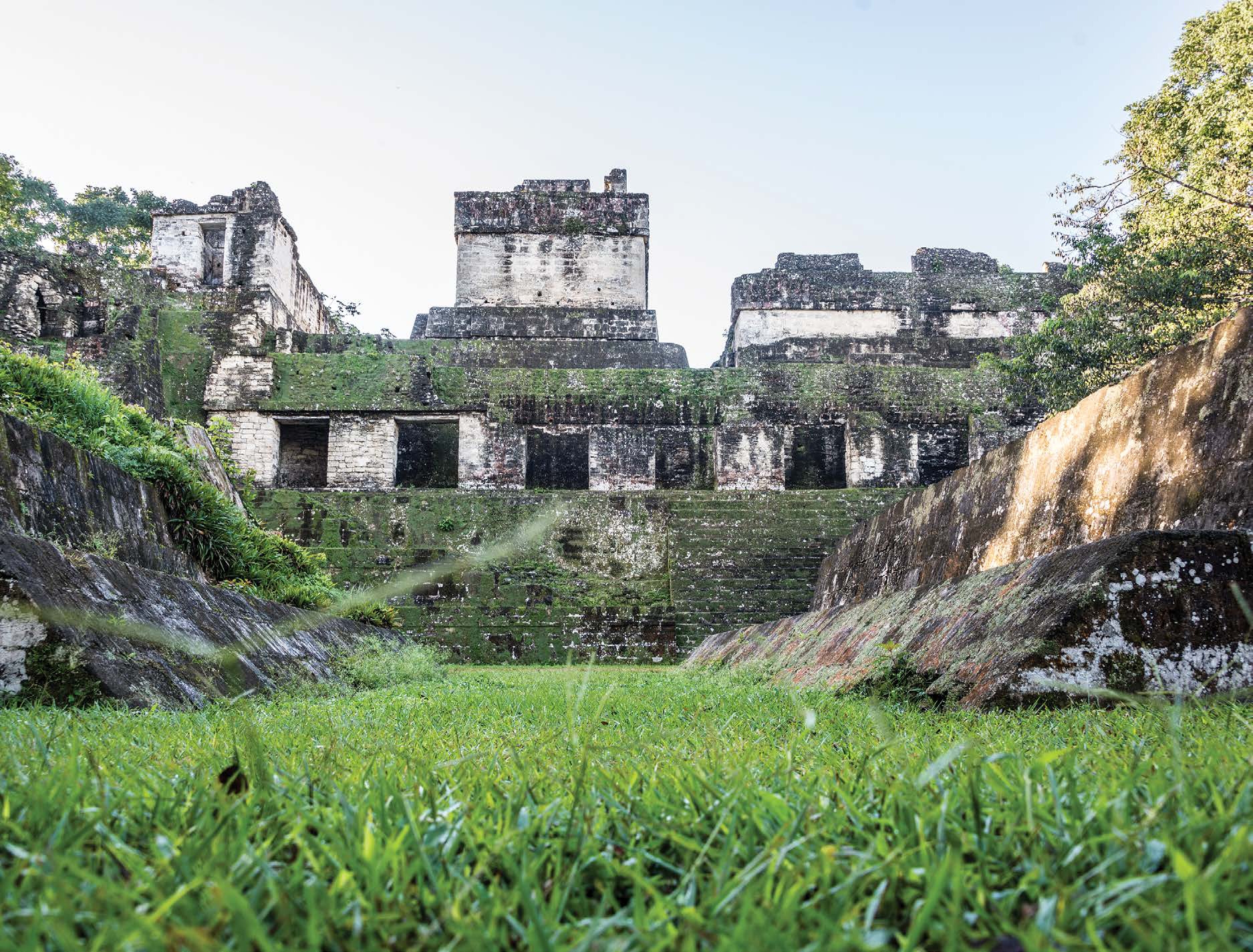
Published in 2020 by The Rosen Publishing Group, Inc.
29 East 21st Street, New York, NY 10010
Copyright 2020 by The Rosen Publishing Group, Inc.
First Edition
All rights reserved. No part of this book may be reproduced in any form without permission in writing from the publisher, except by a reviewer.
Library of Congress Cataloging-in-Publication Data
Names: Leavitt, Amie Jane, author.
Title: How STEM built the Mayan empire / Amie Jane Leavitt.
Description: First edition. | New York: Rosen Publishing, 2020. | Series: How STEM built empires | Audience: Grades: 712. | Includes bibliographical references and index. Identifiers: LCCN 2019013257| ISBN 9781725341500 (library bound) | ISBN 9781725341494 (pbk.) Subjects: LCSH: ScienceCentral AmericaHistory Juvenile literature. | TechnologyCentral America HistoryJuvenile literature. | EngineeringCentral AmericaHistoryJuvenile literature. | Mathematics Central AmericaHistoryJuvenile literature. | Mayas MathematicsJuvenile literature. | MayasHistory Juvenile literature.
Classification: LCC Q127.C35 L43 2020 | DDC 509.728109/021dc23
LC record available at https://lccn.loc.gov/2019013257
On the cover: Of all the incredible building projects undertaken by the Maya, the most iconic are their pyramidlike temples.
CONTENTS
INTRODUCTION
T he Maya are an indigenous group of people who have dwelt in the Central American region for centuries. Today, there are about seven million Maya who live in the countries of Mexico, Guatemala, Belize, El Salvador, and Honduras. They speak about seventy distinct Mayan languages, and many are also bilingual in Spanish.
According to archaeological evidence, it is believed that the Mayan culture in Central America stretches back all the way to 2000 BCE. The Maya were a dominant culture in this part of the world until about 900 CE. Experts believe that the Mayan civilization reached its height somewhere between 600 CE and 900 CE. At that time, they lived in massive cities, each ruled by its own king.
Historical evidence suggests that the Maya were never part of a unified empire, but, rather, more like ancient Greece: their civilization was made up of numerous city-states, where a city was essentially its own country with its own rulers and government. This is similar to modern-day cities such as Vatican City, Singapore, and Monaco.
The Maya built these city-states in three distinct areas of Mesoamerica. The Northern Mayan Lowlands was an area situated on the Yucatn Peninsula, a body of land that juts into the Gulf of Mexico where modern-day Cancn is located. The Southern Mayan Lowlands was an area located in the Petn district of northern Guatemala and portions of modern Mexico. The Southern Mayan Highlands was an area found in the mountainous regions of southern Guatemala.

The Maya civilization stretched from sea to shining sea in Central America.
Over its nearly three thousand year history, the Maya became one of the most complex and dominant indigenous civilizations in Pre-Columbian America. At first, the Maya lived in small communities made up of simple farmers who hunted for game and grew such crops as corn (maize), beans, squash, and cassava. Eventually, the people living across Mayan society became masters in science, technology, engineering, and mathematics (STEM). They used these STEM skills to construct large urban areas with massive stepped pyramids, magnificent royal palaces, carved stone monuments and temples, and impressive public works projects, including aqueducts that fed pressurized water features in the cities, canals, walls, and road networks. It was these advancements that allowed the culture to flourish, expand, and remain powerful across such an enormous span of time.
The Mayan civilization can be divided into five distinct periods. The Preclassic (2000 BCE to 300 CE), the Classic (300 CE to 900 CE), the Postclassic (900 CE to 1550 CE), the European Colonization Era (1550 CE to 1821 CE), and the National Modern Era (1821 CE to present). Most of the STEM achievements occurred during the city construction projects of the Preclassic and Classic eras. Therefore, the achievements in STEM that occurred during those time periods will be the primary focus.
CHAPTER ONE

GREAT CITY BUILDERS
The ancient Maya were impressive city builders. There are hundreds of major city-states in Mesoamerica and likely thousands more that have yet to be excavated or are lost to time. Each city held a population of as many as fifty thousand people. This population figure included the people who lived in the city itself as well as the surrounding agricultural areas or hinterlands. Experts suspect that at its peak, the Maya culture had a population of about seven to eleven million people who were spread out across these large city-states.
PLAZAS AND PATTERNS
Based on the ruins that have already been found and excavated, it appears that nearly all Mayan cities shared certain characteristics. One similarity was the central plaza or courtyard. This structure was a long rectangular grassy area that served as the heart of every Mayan city. Archaeologists suspect that this central plaza may have been used for the Mayas great markets, public gatherings, festivals, and important religious ceremonies. These plaza markets would have been meeting places for traders from all overand outside the Mayan world, as well as opportunities for residents of each city-state to make a living. Excavations of Mayan ruins show that the plazas were truly the downtown of the city-state. They were surrounded by the citys most important edifices, including massive stepped pyramids and stone palaces. These central areas were not only public gathering spaces, used for both commerce and recreation, they were also where the citystates rulers and noble people dwelled.

Tikal is an ancient Mayan city in Guatemala and is one of the countrys most visited sites. It is located in the Petn region and was one of the most prosperous cities of the Mayan Classic period.
In addition to featuring a central plaza, most Mayan cities were structured in a cluster pattern. This differs from cities built by other Mesoamerican people the Olmecs, Toltecs, and Aztecswho typically built their cities on a grid. At first, archaeologists theorized that the Maya just coincidentally used a more spontaneous approach to their city planning. After all, it appeared that the buildings were placed in a haphazard fashion rather than the neat and orderly straight-lined patterns of a gridded system. However, the historical understanding of Mayan cities has changed over time.
Today, most experts argue that the Maya likely used the cluster pattern for several deliberate reasons. First, they needed to build according to the topography of their areas. Most of the Mayan city-states were constructed in the geographically challenging environments of tropical rain forests with marshy swampland, hilly terrain, and thickly vegetated jungles. The Maya, therefore, had to work within the confines of that environment. In some cities, the people had to build terraced multilevel platforms to fit their buildings into the unyielding topography. By doing so, they were able to prevent their buildings from getting destroyed during seasons of high flooding.
Next page




















